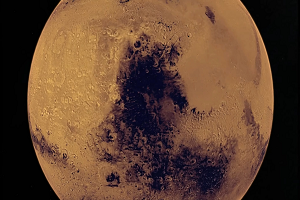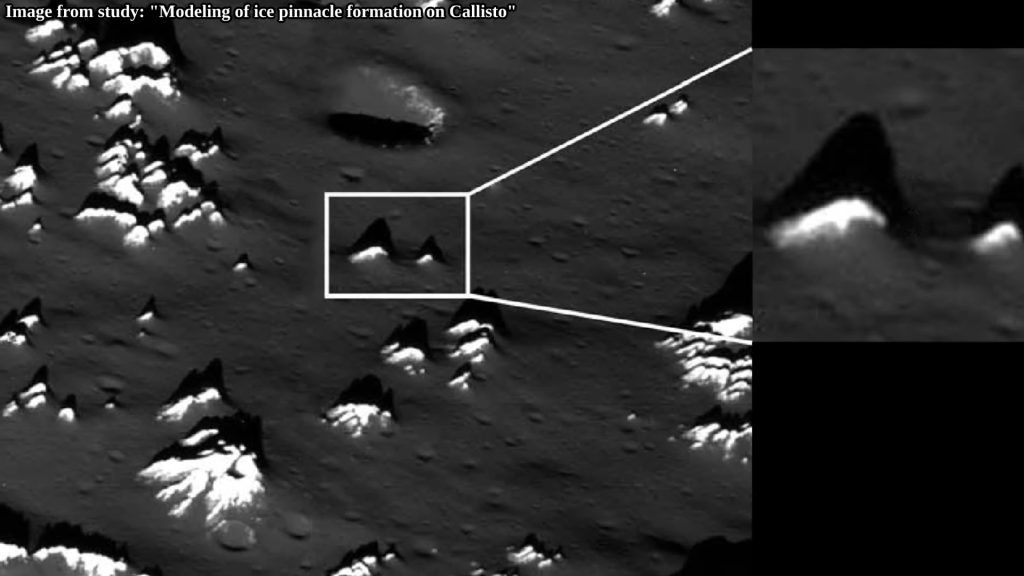
Above image was captured by NASA’s Galileo spacecraft in May of 2001 during the final flyby of Jupiter’s second largest moon Callisto. This final flyby also made the closest approach to Callisto till this date at only 138 kilometres or 86 miles away.
The images from the final flyby revealed ice towers, that are standing between 80-100 meters (260-300 ft) above the surrounding floor. So these towers are about the height of short skyscrapers for comparison. Interestingly they don’t appear to get much taller than that, something prevents them from becoming too tall.
Landsliding can be clearly seen near the rims of many craters on Callisto, in the image above, one we can see a debris field that is several kilometers wide near the rim of a crater. This process likely contributes to the widening of the craters and also possibly to the formation of towers.
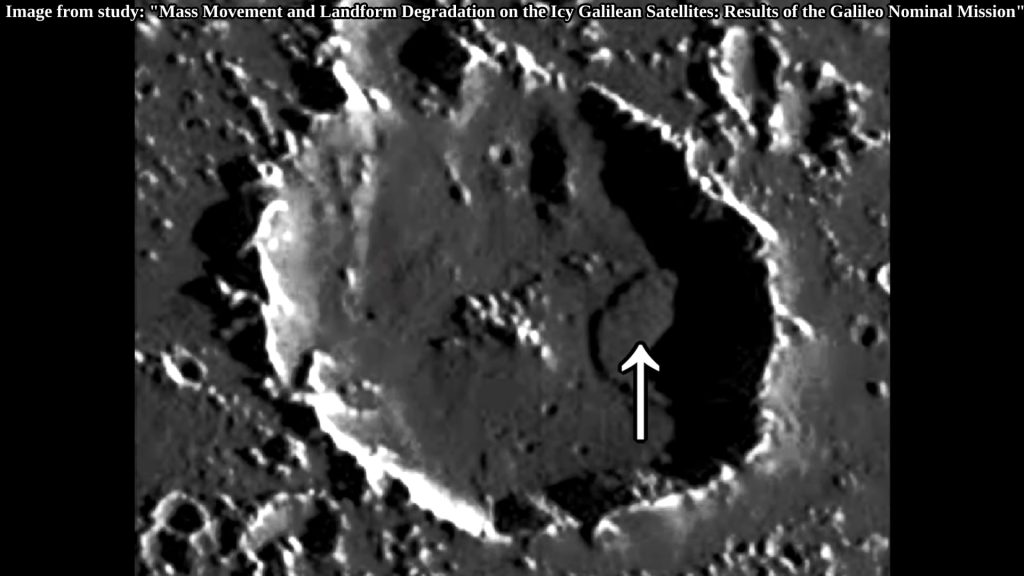
In the above image we can see a process of how Callisto’s strange ice towers form, it is through erosion of the crater rim, and in this image we can also see pretty good evidence of landsliding right next to the tower.
Debris fields next to rims were captured on quite a few craters on Callisto. This process is probably relatively common on the surface, that is why strange areas such as these form a labyrinth like field filled with towers densely packed together.
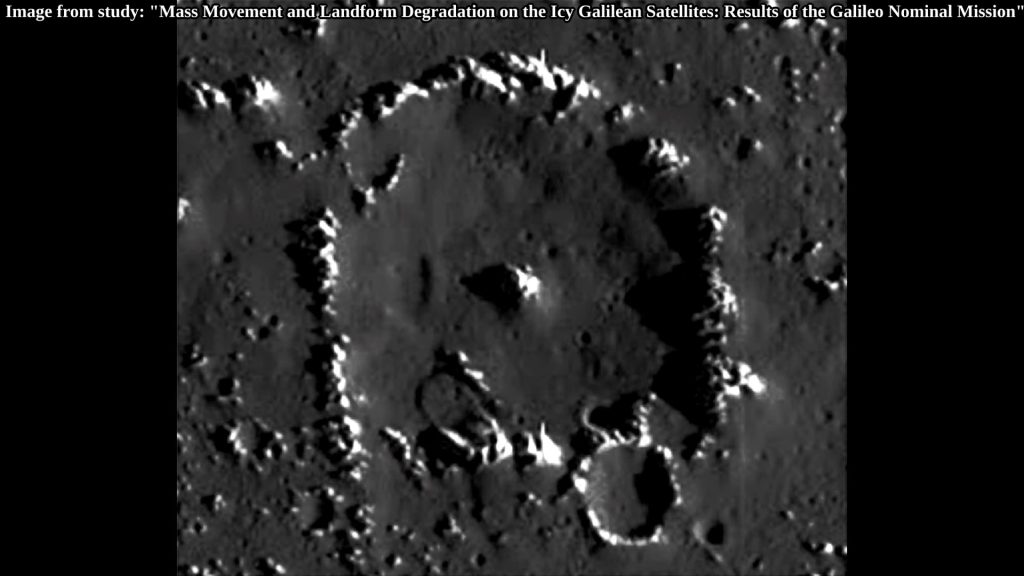
Above image of crater also further confirms the likely formational process of ice towers. But ice towers not only form out of crater rims, but also out of crater ejecta.
Crater ejecta is when an impact hits the surface and then sends huge chunks of the surface flying, the chunks of surface then settle a bit away from where the impact occurred. Above image showcases some of them. We can also see that they turn into ice towers as well.
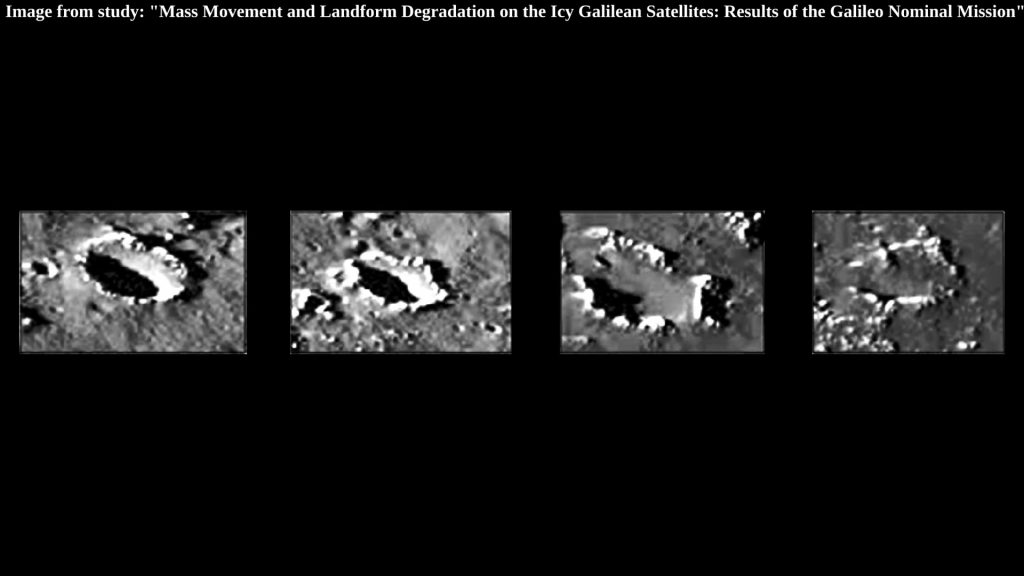
Above image nicely showcases the evolution of Callisto’s typical crater that is 1 kilometer (0.6 miles) in diameter. We can see them in different stages of the erosional process and formation of towers. These towers are also more commonly or officially known as ice knobs. So Callisto has one of the oldest surfaces in the solar system.
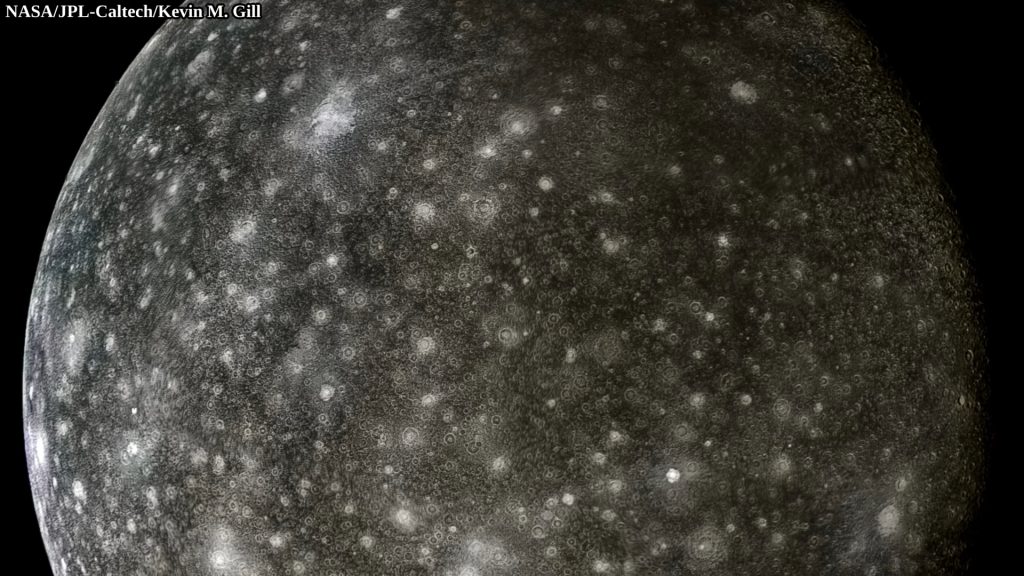
In the above image what can be seen is a result of 4.5 billion years impacts, although a lot of these did indeed occur shortly after the formation. So Callisto on a large scale does not change all that much as there are not truly powerful forces to erase craters.
Callisto is mostly geologically dead because unlike on many other large moons, there are no cryovolcanoes, no large mountains or other indications of large scale surface movement. And despite all of that, there still is obviously something else that although less powerful is still modifying the surface of Callisto. Otherwise crater rims or ejecta would not erode and because of that ice towers would not form.
A very noticeable feature of these knobs is that they are quite a bit brighter compared to the floor. The floor is quite possibly regolith, that is dark fine grained soil. While the bright towers likely have a hard surface, the greater brightness of the towers compared to the floor also tells us that they are icy.
Interestingly many features on Callisto which stand tall compared to the floor appear to have this bright, icy surface. One idea is that this is frost sort of glued to bedrock.
So currently, the idea with most evidence as to how the towers formed and with that how the frost covering appeared on them and other protrusions is through sublimation. Sublimation is when something goes directly from a solid into gas form.
At Callisto’s frigid temperatures of -130 C (-200 F), rock certainly is not capable of sublimating enough to erode huge chunks of the surface, but a lot of the ices very much are.
Sublimation is also what explains bright areas that are superposed, that is they formed on top of the darker soil, once the ices sublimated. They were then distributed throughout areas which are colder, the cold caused the gas to solidify and form these large frost areas, and the frost is especially apparent on local protrusions such as rims.
Exposed bedrock which was likely present on many rims and ice towers, acted as that regional cold area, causing frost to accumulate on them. Sublimation of ices is also thought to be the driving factor behind landslides on Callisto. Sublimation of ices can weaken parts of steep crater rims causing huge chunks to slide down, landsliding as already mentioned, likely creates the ice knobs as well.
Sublimation could be the driving force behind the creation of dark fine grained soil that coats vast parts of Callisto’s surface, as ices sublimate and get redistributed to colder areas they can also leave behind the darker fine grained material.
So then where is all of this ice coming from? Well it could be from impacts. The bright circular areas as seen in image above can be interpreted as exceptionally icy bodies hitting the surface of Callisto, or it could also be impacts revealing the icy surface that sits below, or it could be a combination of both.
Whatever the case is, ices from those bright regions and wherever else present probably then started spreading and redistributing as they sublimated and then solidified in colder areas. That is how so many towers, which were captured in this region, have a frost cover.
So then what type of ice is sublimating on Callisto? The entirety of Callisto has a density half way between rock and water, and the rock and water ice content is largely mixed. This is very different compared to most other known large moons, as they have a near total separation of water and rock content.
Likely the bedrock of Callisto which sits below the thin dark regolith, is a mixture of half water ice half rock. And there we also have a candidate ice that potentially sublimates and forms the frost on the surface.
However it is a bit of a problem that water ice does not exactly sublimate a whole lot at surface temperatures of -130 C (-200 F) which are present on Callisto, although it still does it is extremely slow.
Still given that Callisto is 4.5 billion years old, that could maybe be enough time for water ice to sublimate extremely slowly and then form the frost. But another explanation is that it is not water ice sublimating but carbon dioxide ice.
Carbon dioxide sublimates much more easily at Callisto’s frigid temperatures, or it could also be some other type of ice, or some combination of ices sublimating.
Maybe carbon dioxide and water together are sublimating. Whatever the actual case is, sublimation of ices appears to be the driving force behind the weak but persistent modification of Callisto’s surface.
Another thing that could contribute to the erosional process on Callisto, is small meteorites. So small meteorites constantly hitting the surface could maybe contribute to the formation of ice knobs and regolith.
Although Callisto’s towers are the most impressive in terms of density and steepness, it is not the only object in the solar system with such a feature.
For example, Mercury close to its largest impact basin called Caloris has crater ejecta from the impact, and a lot of the ejecta near the impact site turned into knobs, with some of them nearly 2 km (1.2 miles) in height. Although taller they are typically not as steep and densely packed compared to the towers Callisto has.
Mars also has knobs, in the largest valley in the solar system called Marineris, the floor of the valley in a certain region has a bunch of knobs. Although typically not nearly as tall as the ones on Callisto.
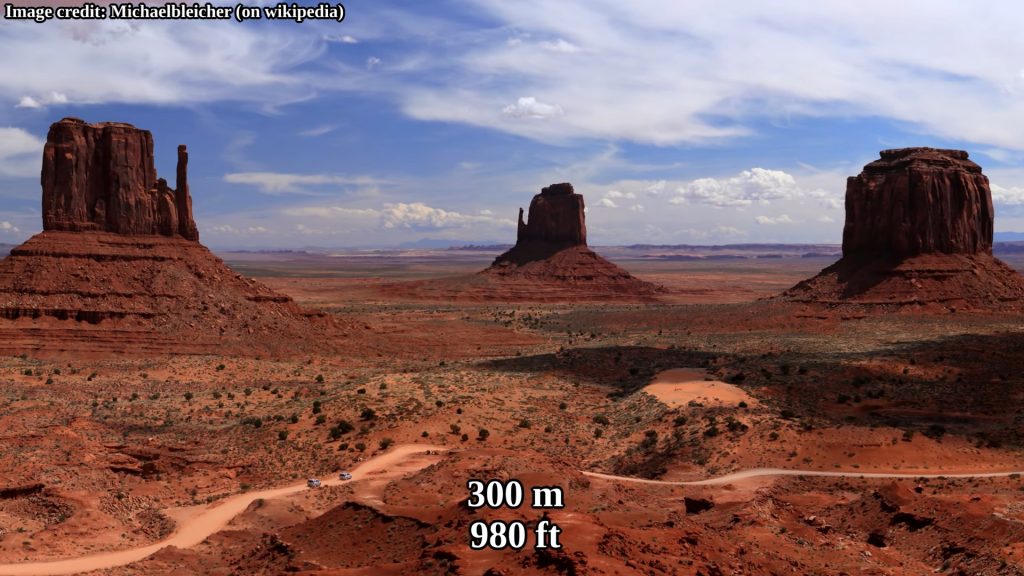
While on the topic of Mars, one place on Earth that resembles Mars quite a bit is the monument valley in western United Sates. This red, rust filled desert has truly immense towers, these three iconic ones as seen in the image above all stand around 300 m (980 ft) above the surrounding floor, around three times the height of the typical Callisto tower.
Sadly we don’t have high quality images of Callisto’s surface besides the ones captured by the Galileo spacecraft. Although these images were good, it basically does not even scratch the surface when it comes to how much more is left to uncover. And even after so many years, these are still the best images we have from Callisto.
The spacecraft currently present around Jupiter is called Juno, so far it is by far mostly focused on Jupiter. However it did dedicate some time to exploring the moons, it approached Io at 1,500 km (930 miles) away, Europa at 350 km (220 miles), and it also did a fly by of Ganymede in 2021 approaching it at a distance of about 1,000 km (600 miles), giving us a pretty good quality large scale view of the largest moon in the solar system.
Still, it did not explore the Moons as much as the Galileo spacecraft did, and on top that Juno did not do a single close fly by of Callisto. Maybe it eventually will do that but it is hard to find information about that. Currently the widely available plan shows that for most of the next year Juno will continue exploring Jupiter.


